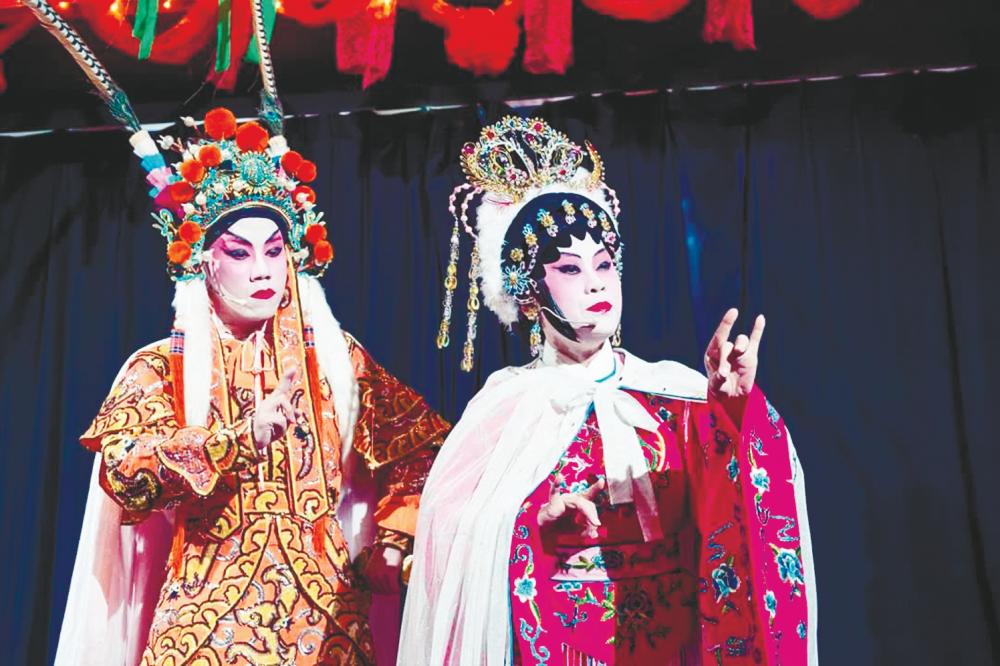BACK when the web was what spiders spun and the TV was in black and white, the Chinese opera was the entertainment that drew large crowds.
Today, such performances are staged only occasionally, mostly on significant dates such as the Hungry Ghost Festival.
For the younger generation, who have unlimited entertainment options thanks to new technology, sitting in the moonlight for a
three-hour stage retelling of palace intrigue or lost love is no longer as magical.
But, if Chinese opera enthusiast Daryl Leong, 43, has his way, the lost art may yet get a revival, thanks to technology.
In Malaysia, the Chinese opera, in various dialects such as Cantonese, Teochew and Hokkien, had its hey day in the 1920s and 1930s,
when several troupes travelled across the country to perform for eager fans.
However, the number of local troupes eventually dwindled, replaced mostly by those from Thailand, particularly for performances in the Teochew dialect.
According to Leong, who is chief secretary of the Yuet Wan Cantonese Opera Association Kuala Lumpur, urbanisation and globalisation also led to a decline, and eventual demise, of the opera.
“Many associations folded up when their opera troupes could not keep up with the times. The Yuet Wan is likely the only group still active in Malaysia,” he told theSun.
Leong lays the blame partly on the failure to instil a love for the art among the younger people.
As a young man practising an age-old art, he is a rarity. He still dons the full regalia for the occasional performance.
Leong laments the fact that many sifus, or masters of the art form, have not been able to find sufficient interest among the younger generation to whom they can pass on their skills.
Opera, Leong pointed out, is an art form that takes years to learn and even longer to perfect. Another setback is the high cost of the costumes.
“Our costumes cost thousands of ringgit, but we do not earn enough to cover even a fraction of that,” he added.
A three-night performance today would bring barely RM400 to the table. But the destroyer of the opera may yet be its saviour.
Leong is looking to new technology to advance a bold plan – to give Cantonese opera a revival. He has assembled a troupe of 10 young social media wizards to advance his plan.
“The young participants have paved more paths for better exposure of Cantonese opera through Facebook and Instagram,” he said.
Many challenges remain.
“For instance, there are not enough musically-talented people who are interested in opera,” he said.
Leong, who has been pursuing his love for the art with the association since 2016, said the immediate priority is to find a new set of talents who can play traditional Chinese musical instruments.
“We strive for authenticity so we don’t use pre-recorded music for our shows. We still rely on older members to provide the music but we need younger people to take over,” he said.
Lots of practice is essential, as the association’s long-time sifu Yoong Poo Hiong pointed out. “She often reminds us to follow her teachings closely so we may pass on the ‘full package’ to the next generation. This is a life-long learning experience.”
Leong still harbours hopes that more young people will be drawn to the art.
“I would like to see the Cantonese opera recognised as a Malaysian art form although it originates in China.
“The Tourism, Arts and Culture Ministry should look into rekindling dying arts and traditions such as ours to boost tourism. With the help of social media, I believe we can instil the same passion among the young,” he said.














